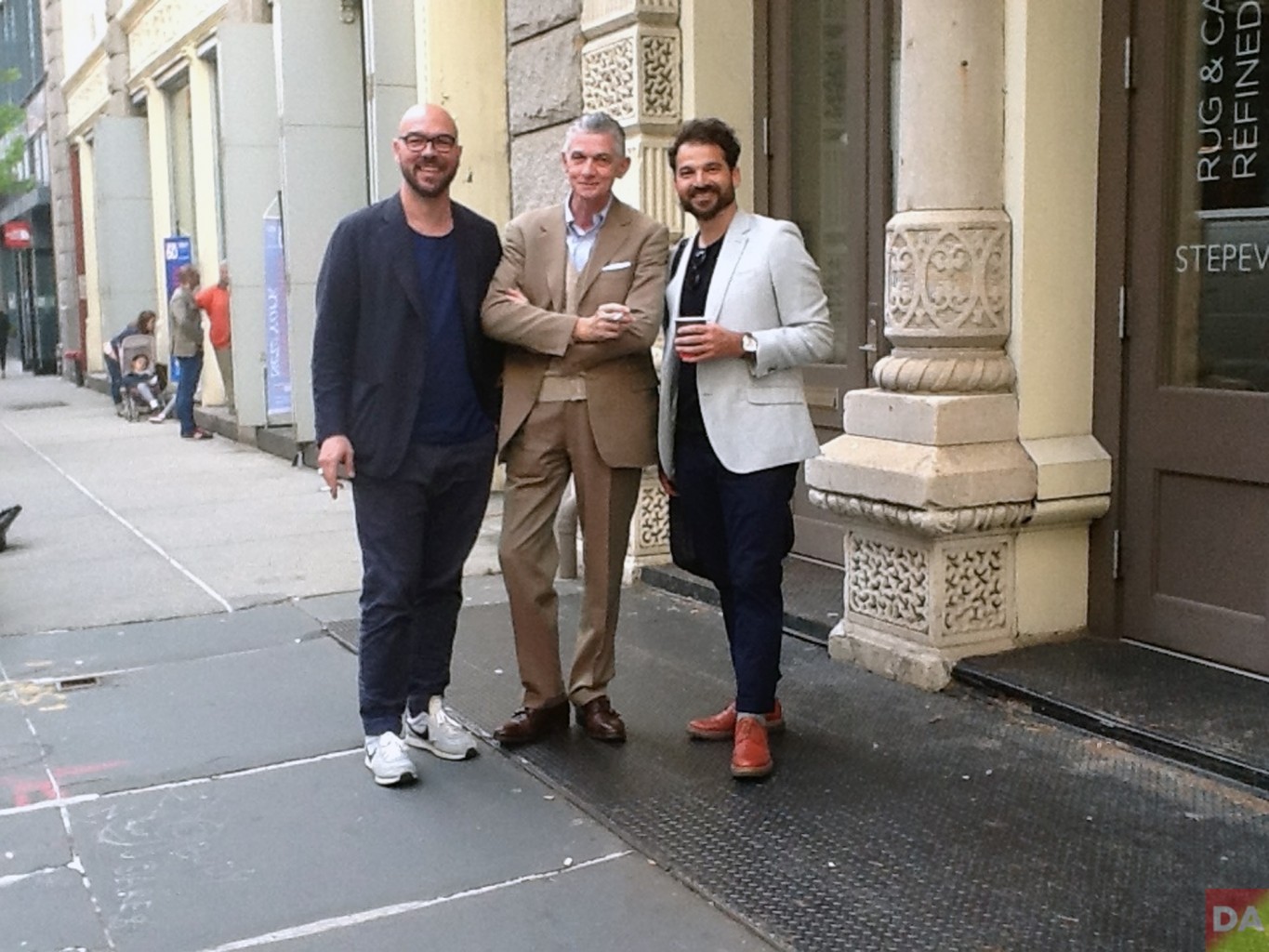
getting from point a to b with giulio cappellini. icff 2015.
[DA] What’s on the top of your mind right now?
[GC] Ah, many things. It’s because I’m always looking towards the future, what’s next. And more and more now, I experience a great of degree of change to an approach to design that has transpired over time. In the 50s and 60s, those early products just had to be well-constructed and beautiful. Today it’s more than just a nice shape, now there’s more emphasis on function. We also think more about scale. By scale I mean that many of our customers live in the city and their living spaces are physically smaller, and we scale down for them.
More recently we have found the need to not only create for the home environment but for the office space as well, a landscape experiencing a great deal of change. The same for technology. There are many more natural materials and complex natural colors to work with. And today the consumer more and more likes the freedom to make their own choices. So more options, more customization is added to the mix. And through all of this, quality has to keep pace and not be compromised. There’s a lot to think about.
[DA] Giulio, you’re a great judge of talent. You’ve done this for years. So many designers that I’ve talked to agree you are responsible for who they are today. Who, what do you look for?
[GC] I think that each designer is unique, they don’t follow the same line or path. Sometimes they have a sketch or prototype and now I think I can’t live without this product and I want to bring it home with me now. I try to talk and get to know the designer to see if we communicate and can work with Cappellini. There’s a need to establish a relationship that communicates the right feeling, the common perspectives and values. So the personal approach is very important. I always say the good Cappellini designers are first of all good friends of mine.
[DA] Good chemistry. Everyone gets from A to B a bit differently. How did you get from A to B. What are some of the things that were important to you to put you where you are right now?
[GC] I’m always enthusiastic in my job and I try to be kind to my stomach, you know, less worry and more passion. At the beginning of my career I didn’t follow an A to B dream. And now today, the company is big, the situation different, and through this change I like to always keep a little freedom. Regarding the company and our relationships with our consumers, we do it a certain way which seems to work, but I also like to take my risks and strongly believe in what I am doing. For me this is very important.
[DA] Would you give the same answer if I was asking what advice would you give to a young designer?
[GC] I’m a visiting professor, invited by design schools to speak about my experiences. I tell students that I understand when they start their career they want their sketches and ideas to quickly hit the marketplace. But you cannot think it’s a simple journey to design a new chair or table. You have to follow the development of a product like a baby.
In the market there are thousands of products. We really don’t need a new table or sofa, we need a better table and sofa. The new products should be more contemporary and the shape may benefit from the new materials and technologies. Plus there are new strategies and philosophies to add to the process, such as incorporating environmentally friendly and less expensive features. I tell them do few things but do good things.
[DA] Is there any aspect in design that’s broken, not working, that can be improved upon?
[GC] What I’m going to say is something I just thought about this morning. There can be a communication problem in design. If a consumer doesn’t buy a product most of the time it’s because they didn’t fully understand the design’s value to them. The value needs to be better communicated to the consumer. We can’t assume the buyer is knowledgeable.
Knowledge is not enough however. For many years, the communication about design was, maybe too sophisticated or better, there was a presumption and maybe an elitist attitude that impeded communication. Maybe it was just hearing the top 300 in design talking to themselves. And maybe this dialog made some a little afraid of design. People might like and appreciate the artifacts in the permanent collection of a museum or the windows displays of a fine showroom but they’re still afraid to go deeper, to engage with design.
[DA] To be continued.
[GC] To be continued.
 L>R luca nichetto, giulio, jaime hayon smokin the design world
L>R luca nichetto, giulio, jaime hayon smokin the design world
[envira-gallery id=”45242″]Giulio Cappellini is a Milanese architect who has been working since 1979 with an energetic spirit and refreshing goals. Through the years his work transformed into that of a designer’s, offering a personal approach to contemporary design. He has successfully established both his brand and his name and has worked as the art director for other key design brands. His most important project, the “company”, transformed Cappellini into one of the biggest trend-setters worldwide. His lectures at the Milan Architecture University always generate great interest from Montreal to Valencia.


